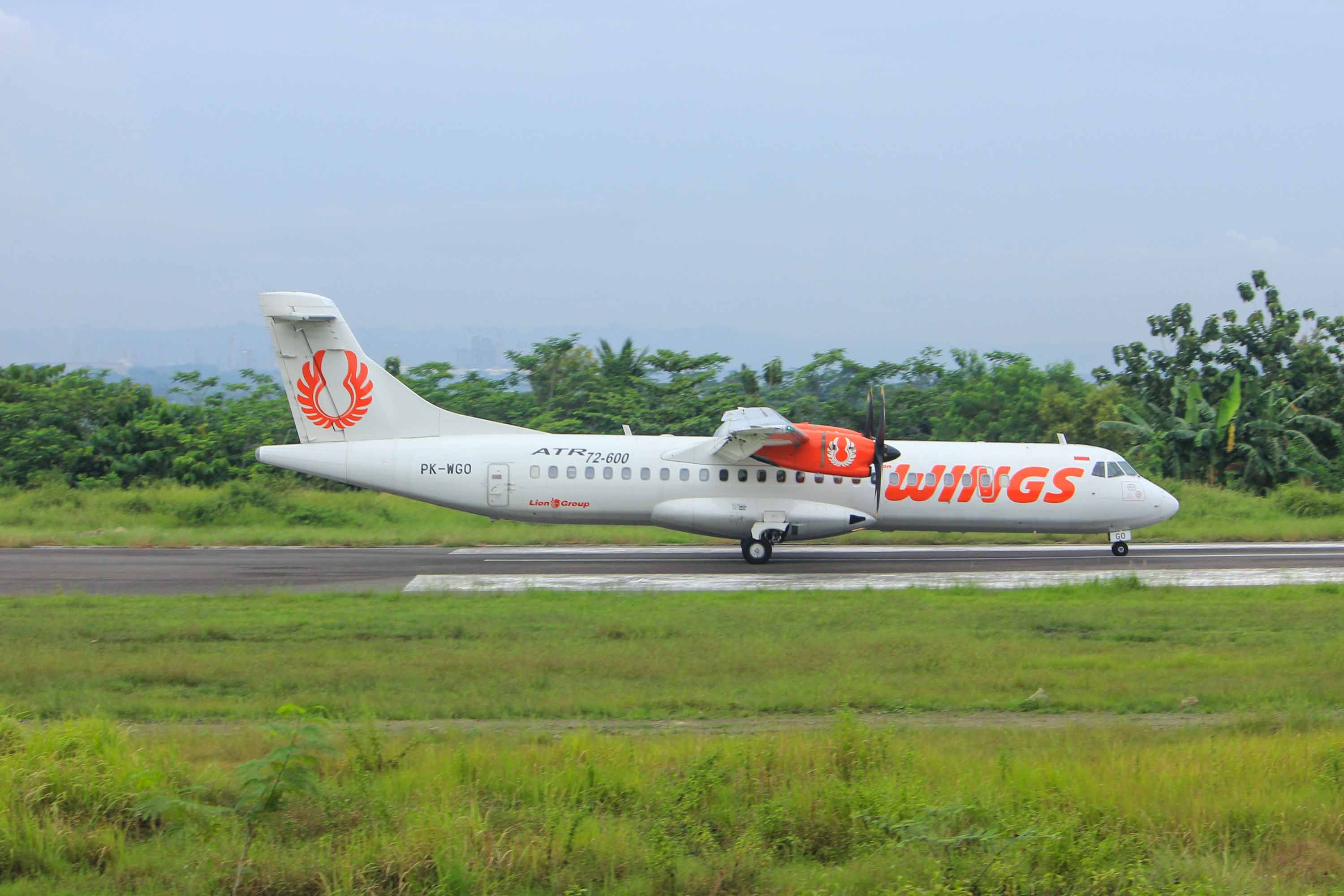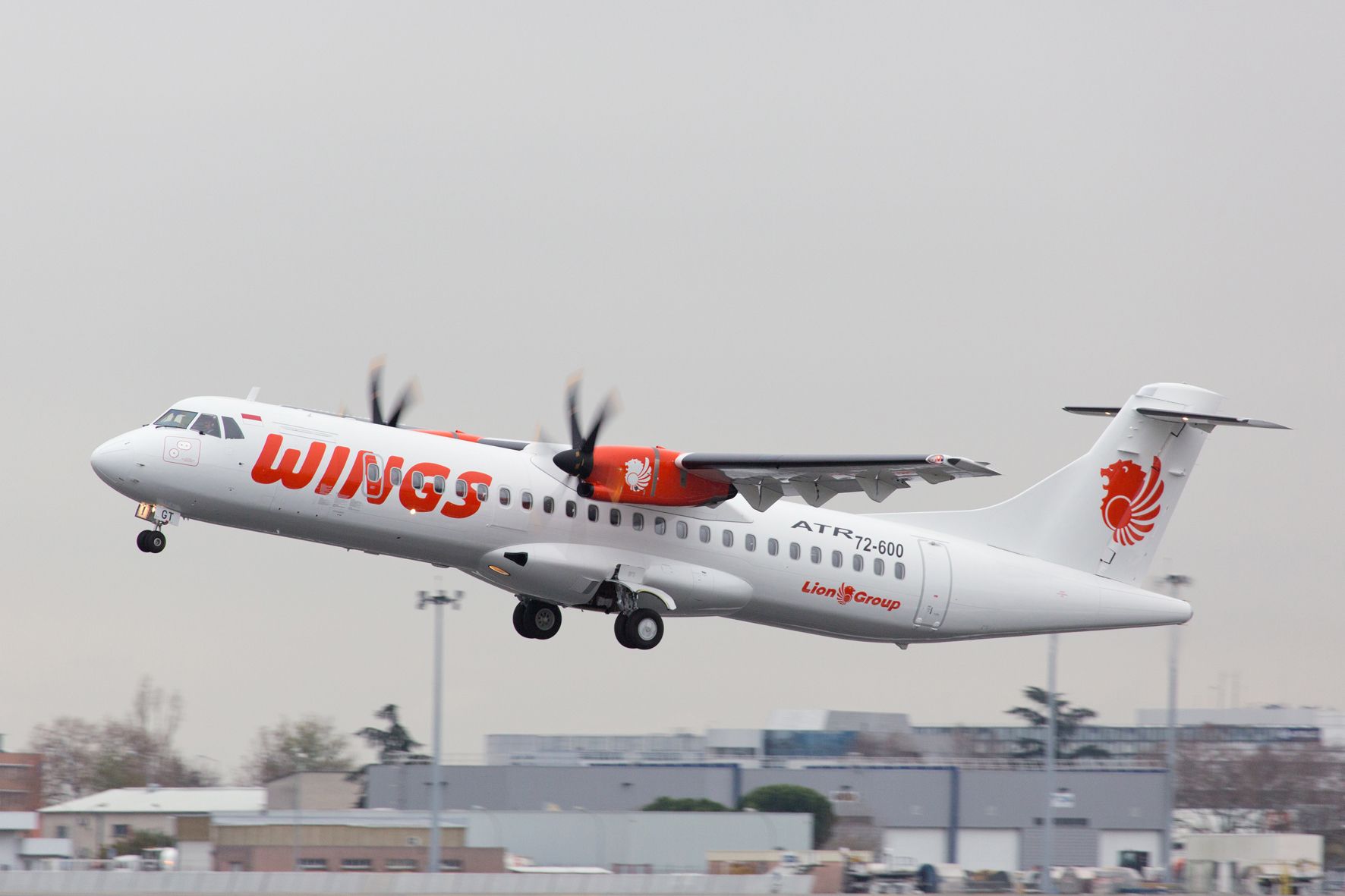Wings Air is an Indonesian low-cost carrier that is part of the wider Lion Air group. Specializing in regional commuter flights, it operates a fleet that consists entirely of Franco-Italian ATR turboprop aircraft. Let's take a look at the models it operates, and has on order.
The ATR 72-500
According to ch-aviation.com, Wings Air's present fleet consists of 66 ATR turboprop aircraft. All of these come from the Franco-Italian manufacturer's ATR 72 series. The ATR 72 first flew in 1988, and is a larger development of the ATR 42, whose first flight took place in 1984. The ATR 72 has outsold the ATR 42, with over 1,200 sales compared to less than 500.
The 66 ATR 72s that Wings Air presently flies are split between two variants of the type. The least numerous version is the ATR 72-500, of which the Indonesian low-cost carrier operates 18 examples. 15 of these were active at the time of writing, with 3 in maintenance. Wings Air flew a total of 20 of these until the start of this year.
The average age of the airline's ATR 72-500s is 10.9 years old. Each of them can accommodate 70 passengers in an all-economy, four-abreast (2-2) seating configuration.
The ATR 72-600
The remaining 48 aircraft in Wings Air's present fleet are examples of the ATR 72-600 variant. This version of the popular Franco-Italian turboprop features several improvements over its -500 counterpart. These include a five-LCD screen cockpit, as well as the ability to apply a 5% power boost during takeoff if necessary. It uses PW127M turboprop engines.
42 of Wings Air's 48 ATR 72-600s were listed active at the time of writing. Five of the remaining six were undergoing maintenance, with the other example in storage. Historically speaking, the Indonesian regional operator has also operated a 49th example of the type.
The airline's ATR 72-600s are somewhat younger, clocking in at an average age of 6.2 years old. They have the same 70-seat setup as the -500s, a common configuration for the ATR 72. A notable exception is Lübeck Air, whose spacious ATR 72s have just 60 seats.
More turboprops inbound
In the coming years, the average age of both Wings Air's ATR 72s and its fleet as a whole will likely fall further. This is due to the fact that it still has 16 examples of the ATR 72-600 on order that are yet to be delivered. Wings Air's Pak Rusdi Kirana stated in 2012 that:
"Our fleet of ATR 72s is playing a major role in the development and democratization of the aviation services in Indonesia, bringing new travel possibilities, at low rates, to an increasing part of the population."
Considering the type's environmental and operational benefits, he added:
"The ATR aircraft are perfectly adapted to the Indonesian short-haul market, and allow Wings Air to connect communities, even those located in remote areas. They are also contributing to the preservation of the environment thanks to their very low CO2 emissions rate."
Wings Air's ATR 72s replaced aging DeHavilland Dash 8-300 turboprops and rear-engined McDonnell Douglas MD-80 series jets. They look set to form the backbone of its fleet for many years to come, offering the airline significant adaptability and efficiency.
What do you make of Wings Air's all-ATR fleet? Have you ever flown on one of the Indonesian carrier's turboprops? Let us know your thoughts and experiences in the comments!


_Spijkers-1.jpeg)
